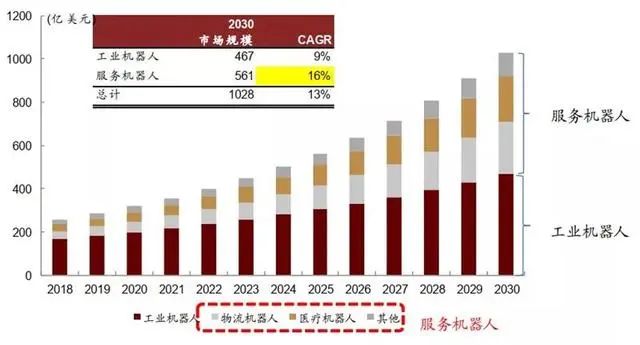AI and 5G are continuously giving rise to new categories of consumer electronics in conjunction with robotics technology. AI addresses the issues of machine understanding of the world and human-machine interaction. 5G expands the operational boundaries of robots, providing them with greater computing power and storage space (cloud collaborative robots).
According to IFR’s classification, robots can be broadly divided into industrial robots and service robots. Traditional industrial robots are mainly used in the automotive assembly, electronic manufacturing, metal and machinery, food processing, and other fields. Their main characteristic is to complete specified actions along predefined paths according to a set program.
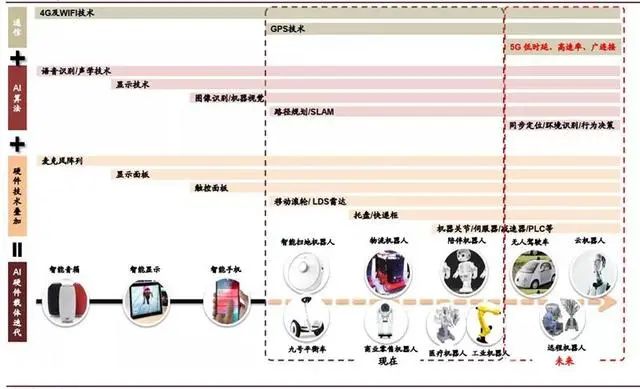
How AI/5G Empower Robots?
The application of AI has given rise to service robots. The scope of service robots is very broad, including healthcare, logistics, agriculture, commerce, and civil use. By utilizing AI technology for data collection, analysis, and computation, service robots can learn human behavior, understand human intentions, and collaborate with humans.
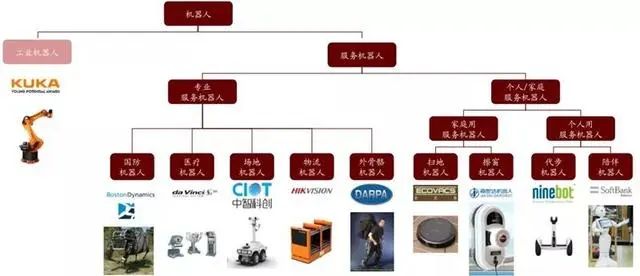
Main Categories of Service Robots and Representative Products
According to IFR’s estimates, the global robot market reached $23.2 billion in 2017, with the industrial robot market accounting for $14.7 billion and a per capita ownership of 85 units. The remaining portion is the service robot market, which reached $8.5 billion.
By 2030, the robot market is expected to reach $102.8 billion, approximately 20% of the smartphone market. The service robot market will reach $56.1 billion, maintaining a 16% annual compound growth rate, outpacing the annual compound growth rate of industrial robots.
Breakdown of Robot Market Size
1: Machine vision hardware can collect information from the surrounding environment.
The commonly used visual sensors include: cameras, ToF lenses, and LiDAR technology.
Machine vision cameras. The purpose of machine vision cameras is to transmit images projected onto sensors through lenses to machines that can store, analyze, and/or display the images. A simple terminal can be used to display images, such as a computer system that displays, stores, and analyzes images.
LiDAR technology. LiDAR is a scanning sensor that uses non-contact laser ranging technology, working similarly to a general radar system by emitting laser beams to detect targets and collecting reflected beams to form point clouds and acquire data. This data can be processed to generate accurate three-dimensional images. This technology allows for the accurate acquisition of high-precision physical spatial information, with a distance measurement accuracy of centimeters.
ToF camera technology. TOF stands for Time of Flight, where the sensor emits modulated near-infrared light that reflects off objects. The sensor calculates the time difference or phase difference between the emitted and reflected light to determine the distance to the photographed object, generating depth information. By combining this with traditional camera images, the three-dimensional contour of objects can be represented in a topographic map where different colors indicate different distances.
2: AI vision technology algorithms help robots recognize their surroundings.
Vision technologies include: facial recognition, object detection, visual question answering, image description, and visual embedded technologies.
Facial recognition technology:Facial detection can quickly identify faces and return the positions of facial frames, accurately recognizing various facial attributes; facial comparison extracts facial features to calculate the similarity between two faces and provide a similarity percentage; facial search locates similar faces within a specified facial database; given a photo, it compares with N faces in a specified database to find the most similar face or multiple faces. Based on the matching degree between the face to be identified and the faces in the existing database, user information and matching degree are returned, i.e., 1:N facial retrieval.
Object detection: Based on deep learning and large-scale image training, object detection technology can accurately identify the category, location, confidence, and other comprehensive information of objects in images. Visual Question Answering: A visual question answering (VQA) system takes images and questions as input and generates human-readable language as output. Image description: It needs to capture the semantic information of the image and generate human-readable sentences. Visual embedded technologies: including human detection and tracking, scene recognition, etc.
3: SLAM technology gives robots better planning and mobility capabilities.
SLAM, which stands for Simultaneous Localization and Mapping, refers to the process of locating and mapping simultaneously. In SLAM theory, the first problem is localization, the second is mapping, and the third is the subsequent path planning. Through mapping via machine vision, robots can simultaneously locate and draw maps of their environment using complex algorithms. SLAM technology effectively addresses issues like unreasonable planning and path coverage, leading to suboptimal cleaning results.

When SLAM is completely absent, the lack of maps and path planning causes vacuum robots to randomly return upon encountering obstacles, failing to cover every area. With SLAM, it can cover any area. Additionally, vacuum robots are equipped with cameras to identify shoes, socks, animal waste, and other objects for intelligent avoidance.
4: Ultra-wideband positioning technology based on ToF machine vision.
In robots, ToF technology is mainly used for high-precision ranging and positioning; currently, ultra-wideband positioning technology is commonly used.
UWB (Ultra-Wideband) is a wireless communication technology that can be used for high-precision ranging and positioning. UWB sensors are divided into tags and base stations. Their basic working principle employs the Time of Flight method for wireless ranging, quickly and accurately calculating positions based on the ranging values.
5: AI natural language processing is an important technology for human-machine interaction.
Humans rely on visual means for 90% of information acquisition, but express themselves using language for 90% of communication. Language is the most natural way of human-machine interaction. However, natural language processing (NLP) is challenging due to differences in grammar, semantics, and culture, as well as dialects and other non-standard languages. With the maturation of NLP, voice interaction between humans and machines is becoming increasingly convenient, promoting the intelligent development of robots.
The array microphone and speaker technology in robots have matured significantly. With the rapid development of smart speakers and voice assistants in recent years, microphone arrays and miniature speakers are widely used. In companion robots like Iron Man, voice interactions with users rely on microphone arrays and speakers. These companion robots resemble moving “smart speakers” and expand the boundaries of their forms.
Currently, conversational robots can be divided into general-purpose and specialized domain conversational robots. The development of natural language processing technology will enhance the interaction experience between robots and humans, making robots appear more “intelligent”.
6: AI deep learning algorithms help robots evolve towards self-awareness.
Hardware:The development of AI chip technology has endowed robots with higher computing power. Due to the advancement of Moore’s Law, the number of transistors that can be accommodated on a chip per unit area continues to grow, promoting chip miniaturization and enhancing AI computing power. Additionally, the emergence of heterogeneous chips like RISC-V architecture chips provides hardware support for improving AI chip performance.
Algorithms:AI deep learning algorithms are the future of robotics. AI deep learning algorithms give robots the ability to learn through input variables. Whether future robots can possess self-awareness depends on the continuous development of AI technology. Deep learning algorithms present a possibility for robots to achieve self-awareness. Through training neural network models, some algorithms have already surpassed human capabilities in specific domains. The success of Alpha Go has shown that humans can achieve self-learning capabilities in certain categories of AI technology, competing with or even defeating humans in specific areas like Go, poker, and knowledge contests.
AI deep learning algorithms enable robots to make intelligent decisions, freeing them from the previous programming logic of single input corresponding to single output, making robots more “intelligent”. However, in the “multi-modal” domain, robots still cannot match humans, especially in signals that cannot be quantified, such as smell, taste, touch, and psychology, where reasonable quantification methods have yet to be found.
7: AI+5G expands the operational boundaries of robots, providing greater computing power and more storage space, facilitating knowledge sharing.
In the 4G era, the four major pain points of mobile robots are:
1) Limited working range: Can only perform tasks within a fixed range, and the constructed maps are inconvenient for sharing, making it difficult to work in large-scale environments.
2) Limited business coverage: Limited computing power and recognition performance still need improvement; capabilities are limited, only able to identify problems, and difficult to deploy quickly in bulk.
3) Limited service provision: Poor capability in complex business tasks, interaction abilities need enhancement, and low efficiency in deploying specialized services.
4) High operational costs: Low deployment efficiency, requiring map construction and path planning for each scenario; equipping inspection tasks, etc.
These four pain points restrict the penetration of mobile robots in the 4G era. Overall, robots still require more storage space and stronger computing capabilities. The low latency, high speed, and broad connectivity of 5G can address these current pain points.
Empowerment of mobile robots by 5G:
1) Expanding the working range of robots. The greatest empowerment of 5G for robots is its ability to expand their physical boundaries. The support of 5G for TSN (Time-Sensitive Networking) allows robots to extend their activities from homes to various aspects of society. We can imagine a future where humans and robots live together. In logistics, retail, inspection, security, firefighting, traffic management, and healthcare, both 5G and AI can empower robots to help humans realize smart cities.
2) Providing greater computing power and more storage space for robots, facilitating knowledge sharing. The promotion of cloud robotics by 5G provides robots with greater computing power and more storage space: elastic allocation of computing resources to meet synchronous localization and mapping in complex environments. Access to large databases for object recognition and retrieval; long-term localization based on outsourced maps. Facilitating knowledge sharing among multiple robots.
Overview of Major Service Robots
1. Vacuum Robots: AI Technology Solving Current Pain Points, Supporting Industry Growth
It is expected that by 2021, the global market size will approach 50 billion RMB, with the Chinese market size reaching 15.1 billion RMB.

Market Size Estimates for Vacuum Robots Globally and in China
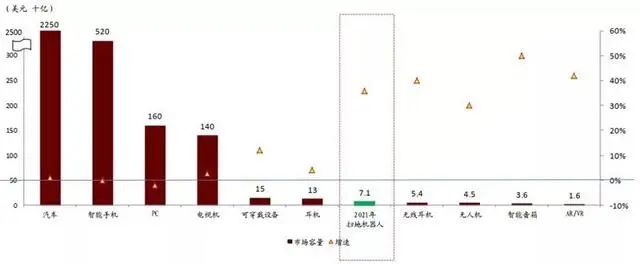
Market Size Estimates for Vacuum Robots in 2021 and Other Categories in 2018
2. Logistics Robots: AI and 5G are Driving the Development of AGV and Unmanned Delivery Robots
According to BIS Research data, in 2016, global AGV sales increased by 38.8% year-on-year to 26,000 units, mainly due to the use and promotion of e-commerce warehouse AGVs; AGV sales in China increased significantly by 88.5% year-on-year to 9,950 units; RIC predicts that from 2017 to 2021, AGV sales in China will maintain an average annual growth rate of 43.0%, reaching 61,000 units by 2021. The automotive industry, home appliance manufacturing, and other production logistics sectors remain the main demand markets for AGVs in China, accounting for about 55% in 2016, with stable demand but increasing requirements for product intelligence and automation; demand for AGVs in e-commerce and warehouse logistics is growing rapidly, accounting for about 29% in 2016, expected to rise to 32% by 2021.

Global Market Predictions for AGVs
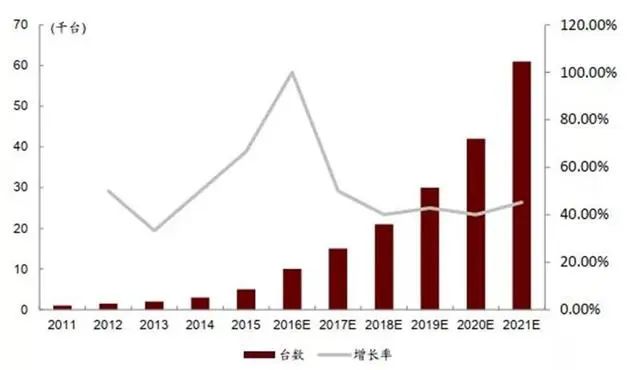
Predictions for the AGV Market in China
Automated Guided Vehicles (AGV): Solutions for Unmanned Warehousing:Automated Guided Vehicles (AGV) determine their routes, placement positions, and surrounding environments through machine vision during their operation, making them the mainstream solution for unmanned warehousing.AGV Features:AGVs are typically equipped with electromagnetic guidance, laser guidance, or machine vision guidance systems. They can travel along predetermined paths and have safety protection and various transfer functions.AGVs are characterized by wheeled movement, offering advantages such as quick action, high work efficiency, simple structure, strong controllability, and good safety compared to other non-wheeled mobile robots.Unlike other equipment commonly used in material handling that require laying tracks or support structures, AGVs operate without fixed installations, making them flexible and efficient in automated logistics systems.
Warehouse Management Systems:AI algorithms have been relatively mature in warehouse management systems. For example, a warehouse management system based on RFID technology can combine RFID identification technology with computer database management queries to save manpower and resources. Compared to traditional (manual) warehouse management systems, it has the following advantages:1) Fully automated identification of inbound and outbound items without human intervention, capable of simultaneously identifying multiple items;2) Fast, accurate, and automatic data collection, allowing real-time and precise inventory management;3) Reduced inventory counting cycles, improving data timeliness, and achieving visual management of inventory items;4) Lower manpower and management costs.
3. Balance Robots: The Rise in the Leisure and Sports Market
Exploratory Phase:Positioning as a transformative transportation tool. In 2001, Dean Kamen launched the two-wheeled balance scooter (with a handle) and founded Segway. In 2010, billionaire Jimmy Heselden bought Segway.
Initially, Segway aimed to change the world of transportation, targeting commercial customers. However, due to high product prices and limited applicable scenarios, Segway’s revenue remained low. In 2015, Segway was acquired by Ninebot, with annual revenues reported around $40 million and annual sales of about 10,000 units. Balance scooters, also known as self-balancing scooters, are available in various forms, including two-wheeled balance scooters (with handles), two-wheeled balance scooters (without handles), unicycles, and balance wheels (similar to electric roller skates). In 2010, Chinese-American Shane Chen invented the unicycle balance scooter SoloWheel. In 2012, Chen invented the two-wheeled balance scooter Hovertrax (without handles).
Development Phase:Chinese companies began by copying, then acquired American firms. Starting in 2009, the Chinese market rapidly copied products and re-exported them to the US market (the domestic operating entity Dingli United was established in 2012). In 2014, Segway sued five balance scooter companies, including Leixing and Ninebot, for patent infringement. In April 2015, Ninebot fully acquired Segway, gaining nearly ten products across three major product lines and over 400 patents, while Leixing acquired Solowheel in 2017, obtaining related patents.
Maturation Phase:The rise of the leisure and sports market. Although the original intention of balance scooters was to change transportation methods, the actual rise of balance scooters has been driven by the leisure and sports market. After Ninebot acquired Segway and received support from Xiaomi, it launched low-priced products suitable for the consumer market (the 9th balance scooter was launched in October 2015, priced at 1999 RMB). Balance scooters have become popular among consumers as products for children and young people, leading to a significant increase in sales. Ninebot began focusing on the leisure and sports market, introducing electric skateboards, go-kart kits, and children’s bicycles. In 2018, revenue from electric skateboards and balance scooters accounted for 66% and 29% respectively, with year-on-year changes of +42 percentage points and -45 percentage points.
Rights of Way for Balance Scooters:In some states in the US, balance scooters are allowed to be used on sidewalks. In China, balance scooters are restricted to closed community roads and indoor venues. Operating a balance scooter requires a high level of skill and poses risks different from ordinary vehicles; for example, Jimmy Heselden, the original controller of Segway, unfortunately fell to his death while walking his dog using a balance scooter.
4: Companion Robots: AI Natural Language Processing Solving Human-Machine Interaction, 5G Driving the Development of Cloud Service Robots
Companion robots have two development paths: one type, like those from Sony and Sharp, applies robotics technology to create jointed bionic robots primarily for the companionship of the elderly, children’s education, and entertainment. The other type, like those from Samsung and Amazon, launches screen robots, primarily aiming to create a robot OS platform to provide software and AI services externally.
In companion robots, we see two types: one is small robots, such as Sony’s Aibo robotic dog, Sharp’s robotic cat, and Takashi Taka’s Robi. These robots primarily serve functions like interacting with users, companionship, education, and communication with others, and most have already been commercialized.

The other type is large upright robots, the most famous being Honda’s Asimo and robots from excellent companies like Boston Dynamics. These large robots are generally equipped with bipedal movement capabilities, allowing them to climb stairs, grasp objects, and interact with humans.

5: Medical Robots: High Demand for AI and 5G in Medical Diagnostics, Surgery, and Rehabilitation
Capsule Robots:Capsule robots + automated diagnostic systems:They may automatically judge potential issues for patients based on collected images, providing reference opinions for doctors’ diagnoses. Coupled with a cloud-based automated diagnostic system, remote diagnostics can be achieved.
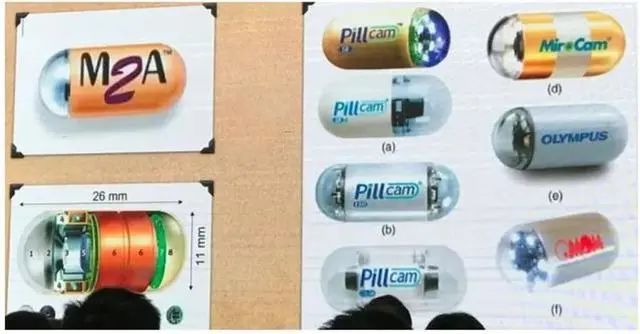
Surgical Robots:Currently widely adopted surgical robots include robotic arms, navigation robots, and master-slave robots.
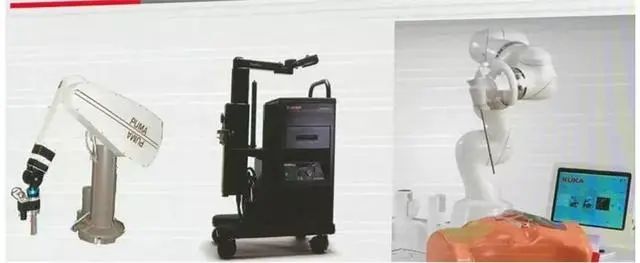
Navigation Robots:Plan surgical paths for surgeons and provide prompts during surgery. Surgical navigation is currently divided into optical navigation and electromagnetic navigation. Optical navigation has high precision and is not affected by electromagnetic interference from other devices, but can be obstructed. Electromagnetic navigation is flexible in operation and has low positioning requirements but is subject to electromagnetic interference.
Optical navigation is primarily applied in neurosurgery, spinal surgery, joint surgery, and maxillofacial surgery. Electromagnetic navigation is mainly used in intracranial biopsies, catheter placements, and bronchoscopy.
Master-Slave Robots:Provide technical support for remote and off-site surgeries for surgeons. The da Vinci surgical system is a type of master-slave robot system that can assist doctors in performing remote surgeries, allowing them to sit while operating, reducing medical accidents caused by fatigue or distraction.
Rehabilitation robots for limb movement. Current rehabilitation robots primarily include upper limb rehabilitation robots and lower limb exoskeleton robots.
6: Commercial Retail Robots: Scaling and Popularizing Indoor Unmanned Delivery Robots
In the commercial retail field, many robots have entered in recent years, including supermarket guide robots, hotel delivery robots, etc. These indoor delivery robots help improve operational efficiency in commercial retail, reduce labor costs, and add fun to services, gaining popularity among users. With the continued rise in labor costs, the prospects for commercial robots are broad and worth attention.
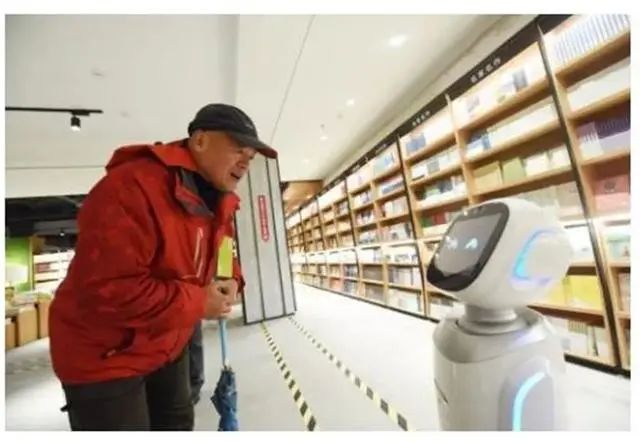
Guide Robot Interacting with Humans
7: Bionic Robots: Becoming Part of Humanity
Consciousness-controlled robots: In some cutting-edge robotics research, consciousness-controlled robotic arms have emerged. Users need to connect the robotic arm to the human brain system and, through training, can control the robotic arm to grasp beverages.
Bionic robots: Humans have developed some robots that mimic human organs, which can help restore normal functions for disabled individuals using the previously mentioned consciousness control. This presents a significant market opportunity.
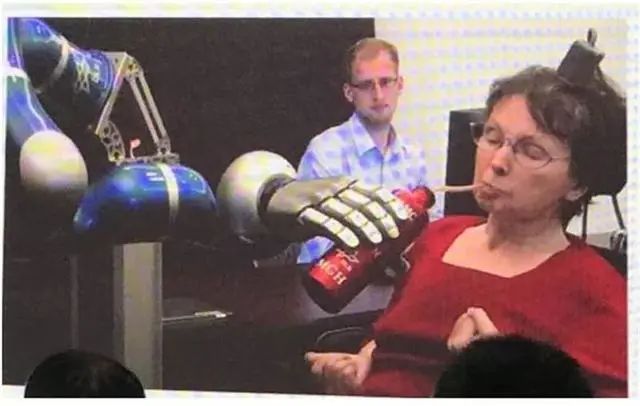
Consciousness-controlled Robot
5G+AI technology impacts many industries, but none are as promising for the future as the robotics industry. AI will help traditional robots evolve from being unable to collaborate with humans to serving humanity, gradually advancing towards cognitive, reasoning, and decision-making intelligence; the maturity of 5G technology will further expand the application boundaries of robots. Through its low latency, high speed, and broad connectivity features, 5G can extend the application boundaries of service robots and provide them with greater computing power and more storage space, facilitating knowledge sharing. In the future, as technology accumulates to a qualitative change point, robots like vacuum robots and logistics robots will become “child’s play,” and robots resembling those in science fiction films may very well appear in the near future, fully integrating into human society to assist humans in coexisting.
Source: Electronic Engineering World
Disclaimer:This article is a network reprint, and the copyright belongs to the original author. However, due to numerous reprints, it is impossible to confirm the true original author, so only the source of the reprint is indicated. If the videos, images, or text used in this article involve copyright issues, please notify us immediately, and we will confirm the copyright based on the proof materials you provide and pay the remuneration according to national standards or delete the content immediately! The content of this article reflects the original author’s views and does not represent the views of this public account or guarantee its authenticity.


